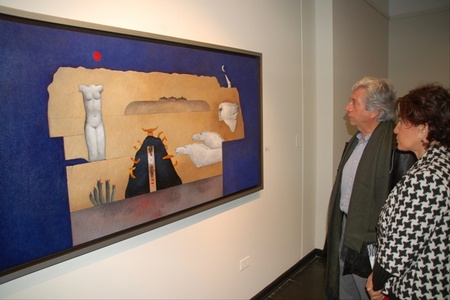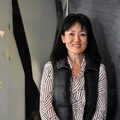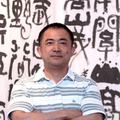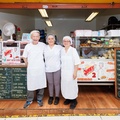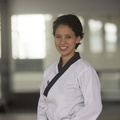El 1 de abril de 2012, el destacado pintor peruano Venancio Shinki Huamán cumplirá 80 años. Toda una vida dedicada al arte, que en Discover Nikkei queremos homenajear compartiendo una entrevista realizada hace unos años, y que nos muestra al sensible artista detrás del pincel.
* * *
Escuchar a Venancio Shinki, reconocido pintor peruano, es una lección de vida, un deleite, un verdadero aprendizaje. Nos recibió en su casa y compartió con nosotros –aún con la advertencia de su mala memoria– algunas de sus vivencias y añoranzas.
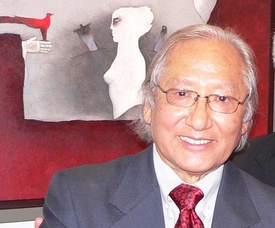
"Ser pintor es ser terco, un poco loco, un poco irresponsable, pero vale la pena. Es una pasión”, señala Shinki.
Según sus papeles, Venancio Shinki Huamán nació en la hacienda San Nicolás, pero su madre, doña Filomena, le aseguró que fue en el valle de Pativilca, en la hacienda Las Vírgenes. Su padre, don Kitsuke Shinki, había llegado de Japón en 1915, trabajó un tiempo corto en San Nicolás y luego estableció sus propios negocios, un tambo y un restaurante en Llamachupán, en el valle de Pativilca (al norte de Lima).
"Yo era un niño muy pegado a mi padre, quien decidió que tenía que estudiar en el colegio japonés de la hacienda San Nicolás que dirigía el Sr. Tsukeo Isayama, un señor servicial e inteligente... Le debo mucho a él, ha intervenido en muchas etapas de mi vida... yo compartía carpeta con su hijo, con quien nos queríamos como hermanos.
Una de las cosas que recuerdo es que al inicio del año escolar llegó de Nihon un paquete de materiales de estudio, que para mí es el inicio de mi vida, de mi formación japonesa. Fue muy lindo porque en ese paquete me encuentro con un libro para hacer origami, paisajes con crayolas, nendo (una especie de arcilla) para hacer muñequitos. Para mí fue como una tabla salvadora porque no me importaba en absoluto si los chicos no querían jugar conmigo".
Con imágenes vívidas, don Venancio nos comenta que por aquella época, las 9 de la noche ya era medianoche en la provincia y todas las luces estaban apagadas. "Había solo una casa que tenía el lamparín prendido. Era mi lamparín sobre la mesa del comedor. Era yo dibujando, hasta que escuchaba la voz de mi madre que decía: '¡Venancio, apaga la luz!'... me acuerdo mucho".
El pintor recuerda también la disciplina y corrección con la que fue educado. "Aprendí a ser un niño correcto, todos teníamos que ser luchadores, trabajadores, ésa era una norma que se nos metió a la cabeza... En el colegio además recuerdo al director escuchando la radio de onda corta y comunicándonos las noticias de Japón. '¡Nipon Banzai!', gritaba... Algunos de los alumnos viajaron a Japón enviados por sus padres y terminaron siendo soldados, y era un honor porque nos habían educado de esa manera".
Como la mayoría de los hijos de inmigrantes, don Venancio se quedó en el Perú. Eran los años previos a la Segunda Guerra Mundial, de las listas de deportados, de los saqueos, de tener que esconderse.
"En el año 40 mi padre tuvo que escapar, no sabíamos dónde estaba, y después nos enteramos de que dormía en la casa de sus clientes y se alimentaba mal... Un día yo estaba saltando de una piedra a otra cuando veo una figura con un bastón largo, una caña. '¡Mi papá!' Estaba muy enfermo. Ahora sé que era una bronconeumonía".
En ese entonces don Venancio sabía escribir en japonés, así que le envió una carta al Sr. Isayama solicitando su ayuda. "A los dos días aparecen dos camiones, y en uno de ellos pusieron a mi padre en un colchón, cubierto con frazadas... Hay una escena hermosa cuando comienzo a ver a los trabajadores, a las señoras diciendo '¡Adiós, señor Shinki, adiós!'... tremendo", nos cuenta con la voz entrecortada. "Ése fue mi padre. Por lo visto fue muy querido. Yo ya iba a cumplir 9 años y el Sr. Isayama nos llevó a la hacienda San Nicolás, a un caserón. A los pocos días mi padre falleció".
"Mi vida es trágica, tiene mucho de etapas dolorosas, y de cosas lindas también, como es la vida...", nos dice mientras sorbe una taza de anís y juguetea con su gato.
Y continúa... "Mi madre heredaría de mi padre el ingenio y el aprender que para sobrevivir era mejor un negocio. Primero tenía un puesto donde vendía frutas y luego pone una chanchería y surte de manteca a establecimientos comerciales de Barranca y Pativilca. Allí se compromete nuevamente y nace mi hermana.
Pasa el tiempo y cuando yo tenía 14 años fallece mi mamá. Me voy a Huando, donde mi tío, pero estaba triste porque no estudiaba. Entonces escribo otra carta al Sr. Isayama y al poco tiempo él me trae a Lima donde había conseguido contactarse con el Sr. Umezaki, que tenía una cadena de tiendas fotográficas. Llegué a Lima casi a los 16 años, un mes de mayo. Ya había terminado la guerra y para mí empezaba una nueva vida".
"Yo siempre fui un niño solitario. Correteaba a las lagartijas y me iba junto al río. Veía a los árboles torcerse con el viento y escuchaba cómo crujía el tronco, como si estuviese hablando. Las ramas eran un coro y el tronco era la voz, y allí abajo el río Pativilca. Ésa era mi diversión en Llamachupán".
* Este artículo se publica gracias al convenio entre la Asociación Peruano Japonesa (APJ) y el Proyecto Discover Nikkei. Artículo publicado originalmente en la revista Kaikan Nº 1 y Nº 2, julio – agosto de 2005 y adaptado para Discover Nikkei.
© 2005 Asociación Peruano Japonea



